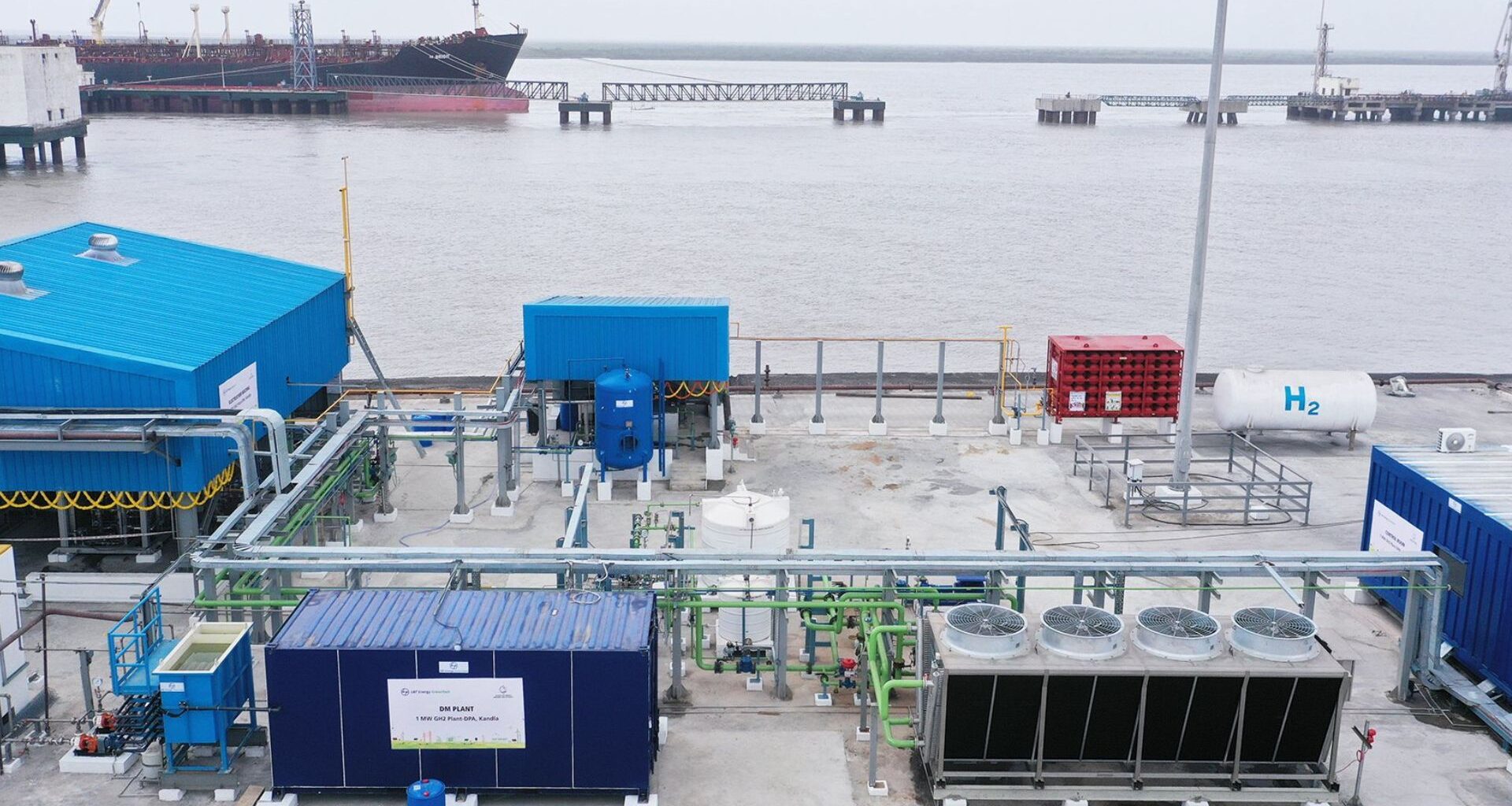Construction has begun on a 30MW 100%-hydrogen turbine in Ordos, northern China. The turbine is being implemented into a renewable energy storage and generation system in the Otoke High-Tech Industrial Development Zone.
According to a report from Fuel Cell Works, this will link wind, solar, hydrogen storage, electrolysis, and green ammonia in a single closed-loop energy system. The project aims to prove the viability of large-scale hydrogen-fired generation.
The turbine will run solely on hydrogen, instead of an H2-natural gas blend, marking a world-first achievement for a project of this scale.
China’s new 100% hydrogen turbine
In 2020, Japan’s Kawasaki Heavy Industries demonstrated a 100% hydrogen turbine. Siemeins unveiled its 100%-hydrogen model in 2023. However, China’s new project is the first to integrate its turbine with large-scale renewables and on-site storage directly. This means it will be the first of this scale to run exclusively on hydrogen.
The development is part of the Ejingke wind-solar-hydrogen integrated green ammonia project. Mingyang Hydrogen, a subsidiary of Mingyang Smart Energy, and Shenzhen Energy are jointly developing it.
The turbine will have a 500MW upstream wind capacity. It will feature a 5MW off-grid photovoltaic array and 240MW of electrolysers producing 48,000 Nm³ of hydrogen per hour (about 4.3 tonnes/hour). It will include twelve 1,875 m³ spherical storage tanks and a plant that produces 150,000 tonnes of green ammonia annually.
An ‘electricity–hydrogen–electricity’ closed-loop cycle
Ultimately, the goal of the project is to deploy an “electricity–hydrogen–electricity” closed-loop cycle. This will convert green power to hydrogen, store it, and then use it for electricity generation during periods of low renewable output. This will help to stabilise supply and address grid intermittency.
The facility will be key in Inner Mongolia’s ambitions to become a national hydrogen energy demonstration hub. It could serve as a guide for future projects worldwide looking to integrate hydrogen into renewable-heavy grids.
According to the Fuel Cell Works report, critics have highlighted the energy losses associated with electrolysis, storage, and combustion. This, they say, could lead to high energy costs.
However, by building a comprehensive green hydrogen ecosystem, China aims to become a world leader in clean energy. The country has made great strides this year. Between January and May, it added 198 GW of solar and 46 GW of wind. According to a report from The Guardian, that is equal to the full electricity output of Indonesia or Turkey.
Under its “dual carbon” strategy, announced in 2020, China aims to achieve peak carbon emissions by 2030 and become carbon neutral by 2060. These plans include expanding wind and solar capacity to 1,200 GW by 2030 and cutting CO2 emissions per GDP unit by 18% by this year.
